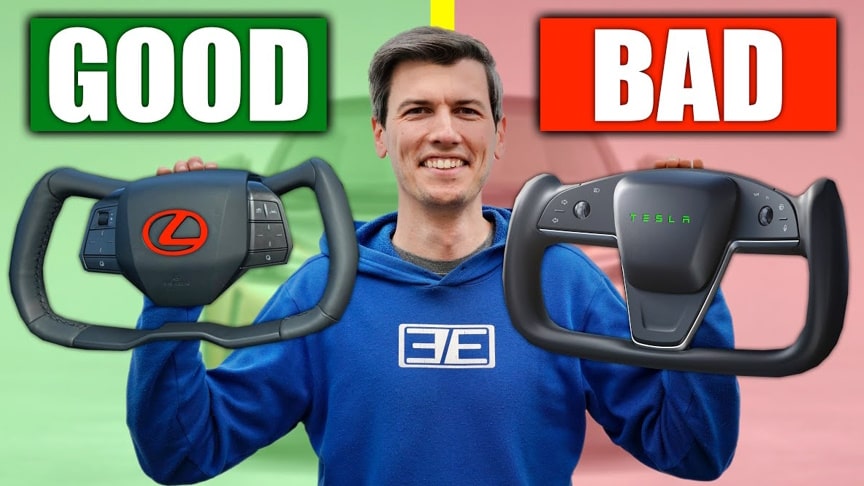The Lexus RZ 450e has a surprising amount in common with the Tesla Model S. They’re both electric, they’re both all-wheel-drive, and they both offer a steering yoke!
source/image(PrtSc): Engineering Explained
Not surprising, Lexus doesn’t want to call it a yoke, because Tesla’s steering yoke got so much negative feedback upon it’s release, and with good reason.Watch the video from Engineering Explained for more info:
Lexus has overcome the Tesla’s flaws, however, with a clever new design: steer-by-wire. You see, there isn’t anything physically connecting the steering wheel to the steering rack; all communication is electronic!
Advertisement
Steer by Wire uses software to translate inputs on a motor at the yoke into outputs from a motor that turns the front wheels. It’s a two-way connection, as road impacts and tire grip levels are transmitted back to the yoke’s motor, providing feedback to the driver; there is an emergency redundancy, too.
Before you freak out, know that we’ll deep dive into this technology in this video, answering the following five questions:
- How does steer-by-wire work?
- Why would you use steer-by-wire, and what are the advantages?
- Can you trust steer-by-wire to be safe and reliable?
- Why is Tesla’s steering yoke a bad design?
- What drawback’s does Lexus steer-by-wire system have?











